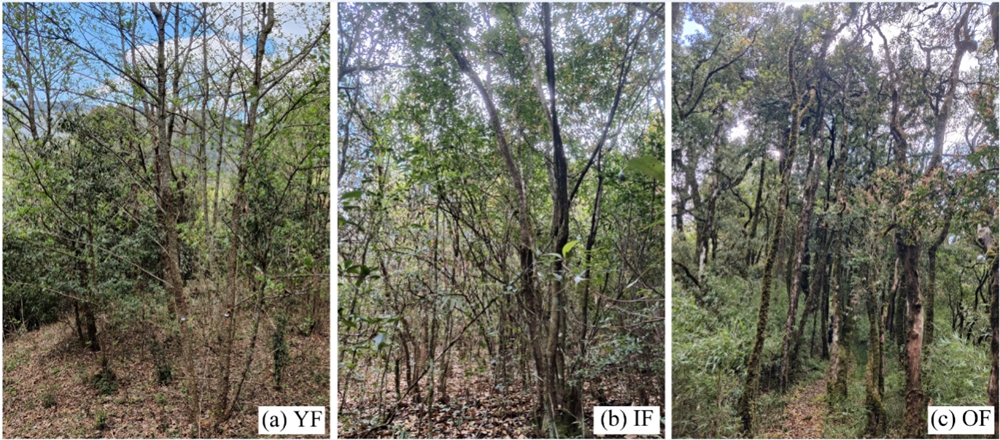Forest degradation caused by human activities and natural disturbances leads to a decrease in biodiversity and ecosystem service functions. Studying the adaptive strategies of plant functional traits during the secondary succession process of degraded forests not only helps to explain community construction and species coexistence mechanisms but also provides insights for the restoration of degraded ecosystems. However, the shifts of plant trait networks during forest secondary succession remain unclear.
In a study published in Ecological Indicators, researchers from Xishuangbanna Tropical Botanical Garden (XTBG) explored the variations in leaf trait networks (LTNs) of multiple dimensional traits and their adaptive strategies during forest secondary succession, including integrality of LTNs, hub traits, and importance of trait dimensions.
The researchers measured 24 functional traits related to leaf resource acquisition, photosynthesis, hydrodynamics and physical defense at three successional stages (young, middle-aged and old-aged forests) in the evergreen broadleaved forest of Ailao Mountain Nature Reserve. Based on the analysis method of Plant Trait Networks (PTNs), they explored the variation of leaf trait networks and their adaptation mechanisms during the forest restoration succession process.
It was found that edge density decreased and modularity increased with succession. Leaf nitrogen, photosynthetic rate and beat force were key traits in young forest stage; while canopy exposure and leaf dry mass became highly connected traits in middle-aged and old-aged forest stages, respectively.
During the succession process, the importance of resource acquisition or photosynthetic trait dimensions always dominated, physical defense dimensions were in the middle, and hydraulic trait dimensions were least important. From the perspective of multi-dimensional trait adaptation, it reflected the adaptive strategies adopted by tree species at different successional stages by adjusting the connectivity of traits to cope with different environmental pressures.
“Our study reveals the adaptive strategies of tree species during the succession process from an overall perspective of the trait network. It provides new methods and ideas for vegetation restoration succession research,” said ZHANG Shubin of XTBG.

Forest structure at different succession stages in Ailao Mountains. (Image by ZHANG Shubin)
Contact
ZHANG Shubin Ph.D
Key Laboratory of Tropical Forest Ecology, Xishuangbanna Tropical Botanical Garden, Chinese Academy of Sciences, Mengla, Yunnan 666303, China
E-mail: zhangshubin@xtbg.ac.cn
Published: 18 August 2024

